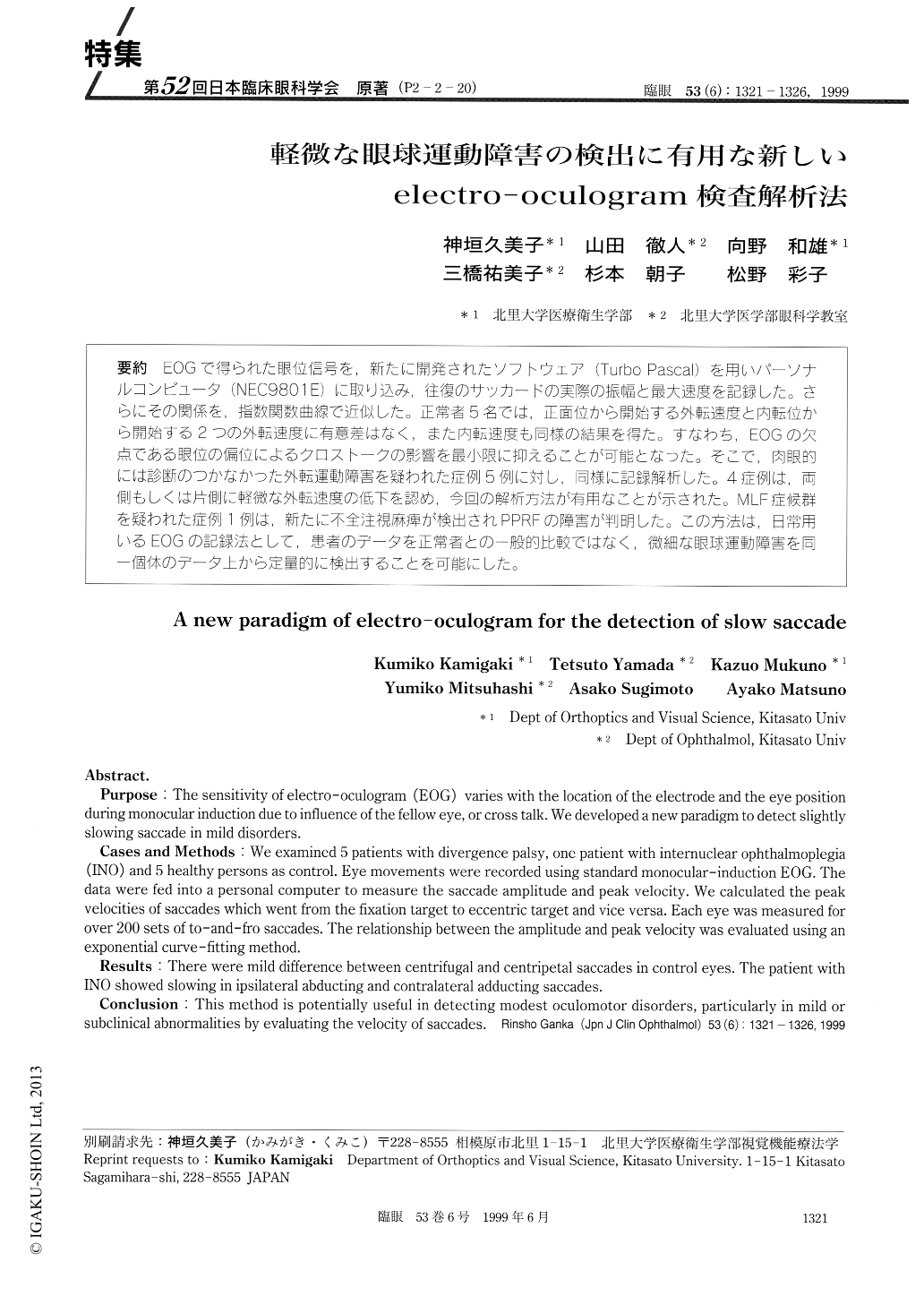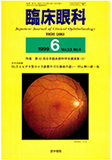Japanese
English
- 有料閲覧
- Abstract 文献概要
- 1ページ目 Look Inside
(P2-2-20) EOGで得られた眼位信号を、新たに開発されたソフトウェア(Turbo Pascal)を用いパーソナルコンピュータ(NEC9801E)に取り込み,往復のサッカードの実際の振幅と最大速度を記録した。さらにその関係を,指数関数曲線で近似した。正常者5名では,正面位から開始する外転速度と内転位から開始する2つの外転速度に有意差はなく,また内転速度も同様の結果を得た。すなわち,EOGの欠点である眼位の偏位によるクロストークの影響を最小限に抑えることが可能となった。そこで,肉眼的には診断のつかなかった外転運動障害を疑われた症例5例に対し,同様に記録解析した。4症例は,両側もしくは片側に軽微な外転速度の低下を認め,今回の解析方法が有用なことが示された。MLF症候群を疑われた症例1例は,新たに不全注視麻痺が検出されPPRFの障害が判明した。この方法は,日常用いるEOGの記録法として,患者のデータを正常者との一般的比較ではなく,微細な眼球運動障害を同一個体のデータ上から定量的に検出することを可能にした。
Purpose : The sensitivity of electro-oculogram (EOG) varies with the location of the electrode and the eye position during monocular induction due to influence of the fellow eye, or cross talk. We developed a new paradigm to detect slightly slowing saccade in mild disorders. Cases and Methods : We examined 5 patients with divergence palsy, one patient with internuclear ophthalmoplegia (INO) and 5 healthy persons as control. Eye movements were recorded using standard monocular-induction EOG. The data were fed into a personal computer to measure the saccade amplitude and peak velocity. We calculated the peak velocities of saccades which went from the fixation target to eccentric target and vice versa. Each eye was measured for over 200 sets of to-and-fro saccades. The relationship between the amplitude and peak velocity was evaluated using an exponential curve-fitting method. Results : There were mild difference between centrifugal and centripetal saccades in control eyes. The patient with INO showed slowing in ipsilateral abducting and contralateral adducting saccades. Conclusion : This method is potentially useful in detecting modest oculomotor disorders, particularly in mild or subclinical abnormalities by evaluating the velocity of saccades.

Copyright © 1999, Igaku-Shoin Ltd. All rights reserved.


